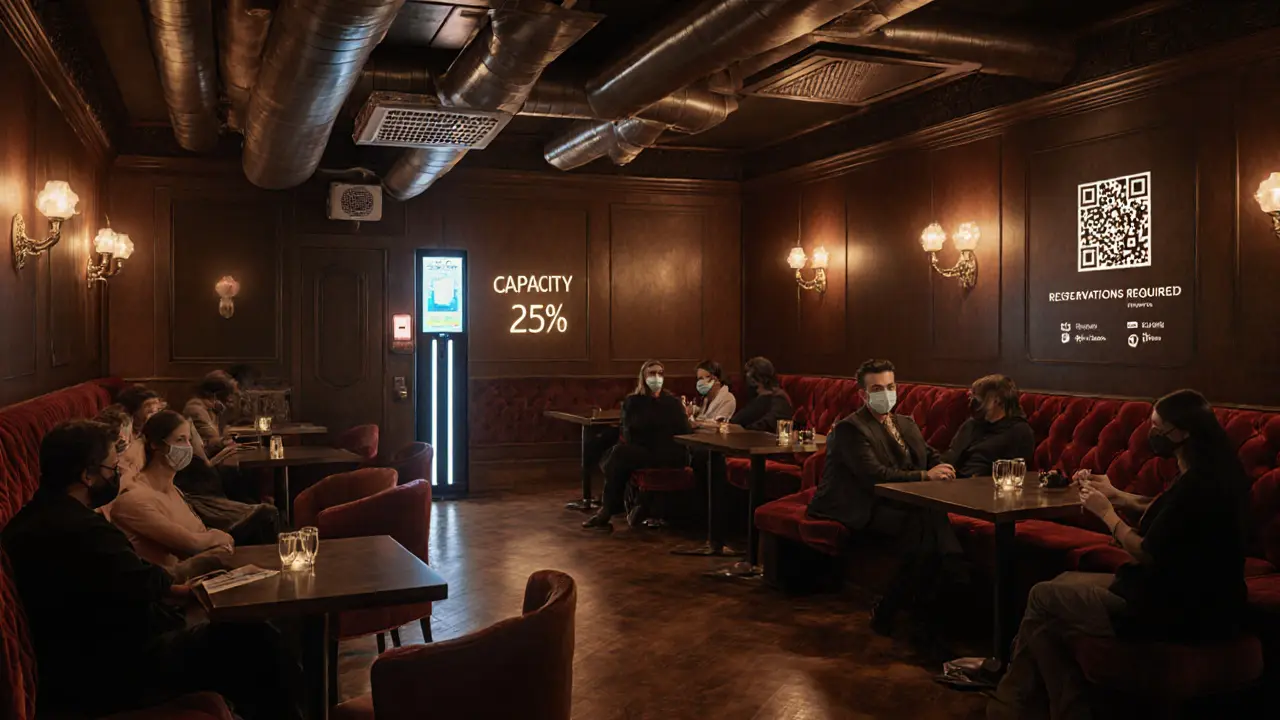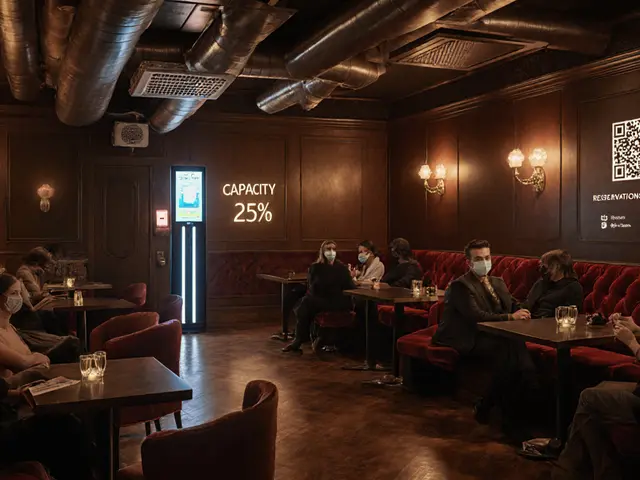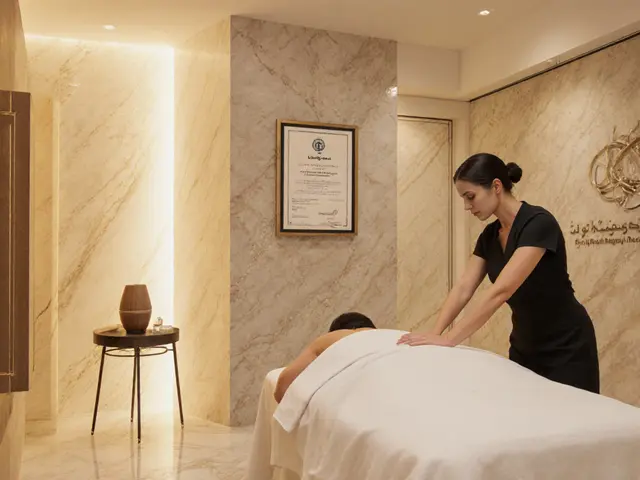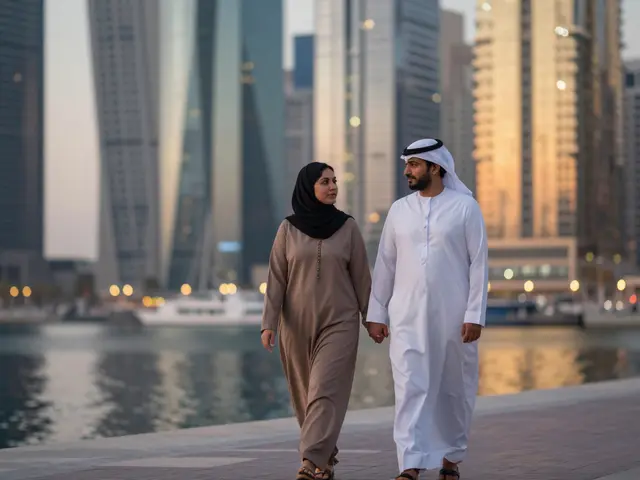
How COVID-19 reshaped Dubai's strip club scene
Key Takeaways
- Dubai's strip clubs saw a 45% revenue drop in 2020, then rebounded to 85% of pre‑pandemic levels by 2024.
- Strict health protocols forced clubs to cut capacity, install ventilation upgrades, and offer digital performances.
- Tourist‑driven earnings fell sharply when international travel paused, shifting profit dependence to local members.
- Licensing rules were tightened in 2021, adding mandatory medical clearances for performers and weekly sanitation audits.
- By late 2025 most venues operate with hybrid models-live shows by night, private virtual streams by day.
Quick Answer
The pandemic slashed foot traffic and forced Dubai’s strip clubs to adopt health‑first policies, trim capacity, and explore online entertainment. Revenue recovered gradually as travel resumed, but clubs now rely more on local clientele and hybrid service models.
Why the pandemic mattered for Dubai's adult entertainment sector
When COVID‑19 hit in early 2020, Dubai shut its borders, grounded airlines, and put nightlife on hold. Strip clubs-high‑visibility venues that cater mostly to tourists seeking luxury experiences-were hit hard. The crisis exposed how tightly the sector ties to global travel and how quickly regulations can reshape an entire business model.
What exactly are strip clubs in Dubai?
Strip clubs in Dubai are upscale adult‑entertainment venues that combine live dance performances, private booth services, and a premium bar environment. They operate under the Dubai Tourism and Commerce Marketing authority’s licensing framework and are concentrated in areas like AlMamzar, Jumeirah Beach Residence, and Business Bay. Most venues target high‑spending visitors, offering VIP rooms and bottle service at prices comparable to five‑star hotels.
Economic shock: revenue and footfall
According to a 2022 report from the Dubai Department of Economic Development, the adult‑entertainment segment contracted by 38% in 2020. Strip clubs, which typically generate ~AED15million annually per venue, reported an average loss of 45% in revenue. The dip was driven by three forces:
- Tourist collapse: International arrivals fell from 16million in 2019 to 5million in 2020, cutting the primary customer base.
- Capacity caps: Health ministries capped indoor venues at 25% occupancy, meaning clubs could seat only a handful of guests per show.
- License suspensions: Over 30% of existing licenses were temporarily frozen while venues upgraded ventilation and hygiene systems.
By 2023, when travel recovered to 12million visitors, club revenues climbed back to 70% of pre‑COVID levels. A further 15% rise came in 2024 as clubs introduced hybrid services-live nights plus subscription‑based virtual streams.

Regulatory overhaul: new rules for safety and licensing
The Dubai Health Authority (DHA) introduced a “Safe Entertainment” guideline in June2021. Key clauses included:
- Mandatory temperature checks at entry points.
- Air‑exchange rates of at least 8times per hour, verified by third‑party audits.
- Weekly deep‑clean certifications for all performance areas.
- Medical clearance for every dancer, refreshed every three months.
Clubs that failed to comply faced fines of up to AED500,000 or revocation of their license. The stricter environment pushed several smaller venues out of business, while larger operators could afford the upgrades.
How clubs adapted: technology, services, and staffing
Faced with limited in‑person capacity, many owners turned to digital platforms. A notable example is "SilkStream", launched in late 2020, which lets performers broadcast private shows via encrypted video links. Subscriptions start at AED150 per month, and clubs earn a 30% commission. By mid‑2022, over 60% of Dubai’s strip clubs offered a virtual tier alongside their physical floors.
Operational tweaks also included:
- Reservation‑only entry to control crowd size.
- Expanded VIP lounge space to meet social‑distancing needs.
- Introduction of “contact‑less” bottle service-orders placed via QR code and delivered directly.
- Shift of staffing patterns: more security personnel, fewer bartenders during off‑peak hours.
Current landscape and future outlook (2025)
As of October2025, the sector is stabilizing. The Dubai Economic Report cites an average occupancy of 80% for strip clubs, with annual revenues hovering around AED12million per venue-still shy of the pre‑COVID peak but enough for profitability.
Looking ahead, three trends dominate:
- Hybrid experiences: Physical shows remain premium, while virtual subscriptions provide a steady income stream.
- Health‑first branding: Clubs market upgraded ventilation and regular health checks as selling points.
- Local loyalty programs: With tourists fluctuating, venues are courting Dubai residents through membership tiers offering discounted nights and exclusive online content.
Experts predict a modest 5‑10% growth annually, driven by the tourism rebound and the acceptance of digital entertainment as a complement rather than a replacement.
Comparison: Strip Clubs vs. Nightclubs in Dubai (pre‑ vs. post‑COVID)
| Strip Clubs (2019) | Nightclubs (2019) | Strip Clubs (2024) | Nightclubs (2024) | |
|---|---|---|---|---|
| Average Daily Capacity | 200 guests | 350 guests | 80 guests (25% limit) | 120 guests (35% limit) |
| Revenue Share from Tourism | 70% | 55% | 45% | 50% |
| Adoption of Virtual Services | None | 5% (live streams) | 62% | 18% |
| License Renewal Fees | AED20,000 | AED15,000 | AED35,000 (incl. health audit) | AED22,000 |
| Average Customer Spend per Visit | AED2,500 | AED1,800 | AED2,200 | AED1,900 |
Frequently Asked Questions
Did Dubai completely ban strip clubs during the pandemic?
No. The venues stayed open but operated under strict capacity limits and health protocols. Full closures only occurred for a few weeks in April2020 while the city imposed a general nightlife curfew.
How have performers been affected?
Dancers now undergo regular COVID‑19 testing and must present a health clearance certificate. Many have added online streaming to their income, earning up to 30% more during off‑peak months.
Are virtual strip shows legal in Dubai?
Yes, provided they are hosted on platforms licensed by the Dubai Media Regulatory Office and adhere to modesty guidelines. Clubs must keep a record of all streams for audit purposes.
What safety measures should I look for when visiting?
Check for visible temperature scanners, posted ventilation certifications, spaced seating, and QR‑code menus. Most reputable venues display a "Safe Entertainment" badge at the entrance.
Will prices rise again as tourism returns?
Experts expect a gradual increase, especially for premium bottle service and VIP suites, as demand eclipses the limited capacity allowances.
Understanding how the pandemic reshaped Dubai’s strip club industry helps you gauge where the market is heading and what to expect when you step through the doors. Whether you’re a curious traveler, a local regular, or a business partner, the post‑COVID landscape offers a mix of old‑world luxury and new‑age digital flair.

Shannon Carlisle
I'm an experienced escort with a deep interest in Dubai's unique entertainment scene. I enjoy sharing my insights and stories from the vibrant world of escorting in Dubai. Through my writing, I hope to offer a fresh perspective on the city's nightlife and luxurious experiences.
Popular Articles
About
Discover escort UAE in our blog! Uncover the UAE’s nightlife, premium companionship, and discreet elegance with unique stories and insights. Start your journey today







